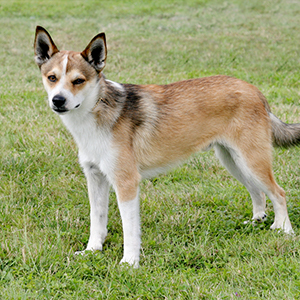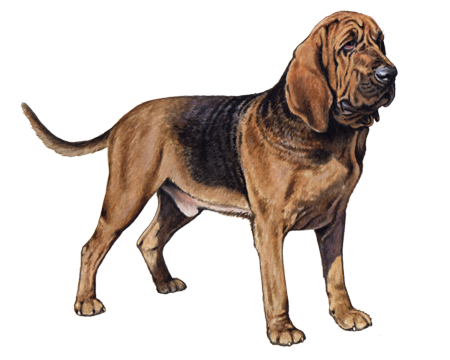
Norwegian Lundehund
At first glance, the Norwegian Lundehund may seem like an average dog. But many unique characteristics (such as six-toed feet!) set this breed apart. Originally developed to hunt puffin on the rocky island of Vaeroy, Norwegian Lundehunds also make loyal, playful family companions.
Interested in discovering if your dog is a Norwegian Lundehund?
Check out Wisdom Panel's DNA tests.

Norwegian Lundehund Traits
General Appearance
This small, rectangular Spitz breed seems average at first glance. They have a wedge-shaped head with medium-sized, triangular ears and a level back with a tail that hangs at a slight curve when it’s at rest. But, there’s a lot more to the Norwegian Lundehund than initially meets the eye.
Coat and Colouring
The Norwegian Lundehund has a durable and dense outer coat with a softer undercoat. Their colorings are typically fallow to reddish-brown or tan, with black hair tips and white markings, or white with red markings. As they mature, they develop more black hair tips.
Distinctive Physical Traits
Though the Norwegian Lundehund resembles a typical Spitz, they have quite a few unique physical traits that helped them scale Norwegian cliffs.
The first unique characteristic of the Norwegian Lundehund is that they have a minimum of six toes on each foot, as well as elongated rear footpads. Their neck is also what’s referred to as “elastic,” which means that their head can bend completely backward to touch their spine.
Their shoulders are also incredibly flexible and allow their front legs to extend flat to the side (necessarily and helpful when scaling cliffs), and their ears can close and fold forward or backward to protect from dirt.
Norwegian Lundehund Temperament
This breed is alert, active, loyal, and protective. Although they can sometimes be wary of new people, they aren’t overly aggressive or shy.


Norwegian Lundehund History
Though their exact beginnings are unclear, Norwegian Lundehunds originated on an archipelago north of the Arctic Circle. These dogs played a key role in Norway's northern coastal economy. They had physical adaptations—such as six toes and an "elastic" neck—that helped them hunt puffins among the steep cliffs in the area. For this reason, Norwegian Lundehunds were quite valuable, and people usually kept many of them.
But when the Norwegian government created taxes on the dogs and puffins became endangered, that all changed. Fortunately, the communities of Værøy and Lovunden offered seclusion and protection that saved the breed from extinction. A woman named Eleanor Christie then started building back the Norwegian Lundehund's numbers. And eventually, a Swedish geneticist created a strict breeding plan, which the Norsk Lundehund Klubb Breeding Council adopted. Norweigian breeders still follow his guidelines this day.
Norwegian Lundehund Care
Nutrition
Feed your Norwegian Lundehund a high-quality dog food suited to their particular age, activity level, and size, as well as any additional health concerns.
As with any dog, it’s essential to monitor the amount of food and treats you give your Norwegian Lundehund to avoid having them gain weight, especially as they age. Your veterinarian is always a good source to help provide you with appropriate nutrition and feeding guidelines.
Grooming
The Norwegian Lundehund’s low-maintenance double coat requires only weekly brushing to help remove loose hair.
All dogs require regular dental care, including at-home teeth brushing and professional dental cleanings. And the Norwegian Lundehund is no exception. Maintaining good dental hygiene is important for their overall long-term health.
Exercise
This high-energy dog requires daily activity to stay stimulated and healthy. Luckily, they enjoy many companion activities, so a nice walk around the block or game of fetch will keep them happy.
Training
The Norwegian Lundehund is smart, loyal, and can be easy to train.
But remember, this breed can be sensitive, and they don’t react well to harsh training methods or a strong hand. Be patient and affectionate, and your training sessions will succeed.
Breed Group
Hound
The most common ancestral trait of this group is being used for hunting. Some use acute powers of scent to follow a trail while others demonstrate the gift of stamina as they run down a quarry. Beyond these two common traits, however, generalizations about hounds are hard to come by as the group is comprised of a very diverse lot of breeds.












































